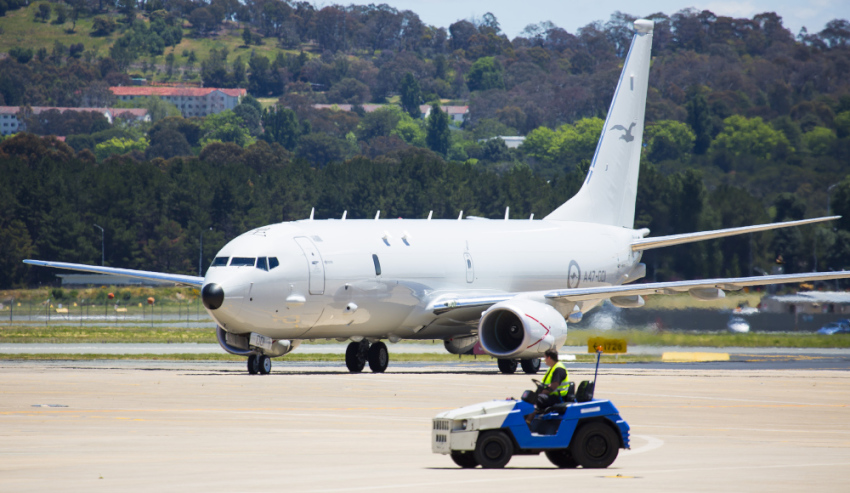Airborne intel, surveillance and reconnaissance (ISR) defence capabilities have been identified as a critical area for improvement among Australia and her allies.
The rate of technological change, as well as the growth in air fighting technology among our adversaries, have made Australia and her partners’ old fleet of rotor, fixed wing and drone ISR aircraft increasingly outdated. In fact, the Commonwealth’s Integrated Investment Program has earmarked $195 billion for ISR investment to meet the strategic needs outlined in the Defence White Paper to 2025.
This phenomena isn’t isolated to Australia. The US National Defense Strategy Commission expressed that the US faces intense military competition from opposing global super powers for the first time in decades. To combat this, the House and Senate Armed Services Committee instructed the Future of Defense Task Force to undertake an examination of the importance of extended airborne ISR capabilities alongside the capabilities of the US’ adversaries.
Put simply – the US government implied that it can no longer rely on its conventional fighting force as a sufficient deterrent. Like Australia, the US National Defense Strategy pinpointed ISR as a crucial area for the US’ defence modernisation priorities, with the Department of Defense expressing a desire to ensure that aircraft to have information sharing capabilities.
Where the United States’ commitment to air superiority has waned over recent years, allies in NATO have begun acquiring a fleet of UAVs. It seems that NATO has likewise seen what the US and Australia have seen – that airborne ISR is paramount to national security.
It is crucial that Australia maintains her commitment to the Indo-Pacific, and must sustain robust and technologically superior rotor, fixed wing and drone ISR capabilities. Intelligence, surveillance and reconnaissance aircraft will help Australia monitor threats, adapt to our adversaries and – if necessary – undertake military engagements on Australia’s terms, and not wait for our enemy.
Drone
As noted, both Commonwealth and Defence have gone to great lengths to make sure that Australia procures world leading ISR capabilities, having identified that ISR is a crucial component of Australia’s defence.
Australia is expected to continue its launch into the world of unmanned aerial vehicles with the acquisition of MQ-4 Tritons to bolster the nation’s ISR capabilities and provide additional support to the MQ-9 Predator/Reaper. Australia’s acquisition of the Triton is a venture between the US Navy and RAAF, with the UAV specialised to identify the presence of enemy submarines. Defence outlines that the UAV has a flight time of 24 hours and a can fly some 8,000 nautical miles. In fact, the Triton can oversee an area of 2,000 square miles. Critical to the defence of the Indo-Pacific, the Triton can be integrated with the P-8A Poseidon – the US Navy’s specialise ISR fixed wing aircraft – allowing a harmonious transition of data and information between the Australian military and our allies in the US.
Fixed Wing
While drones are becoming a staple of the international ISR market, they haven’t yet completely stolen the show. The P-8A Poseidon remains a stable feature among the ISR capabilities of Australia and her allies. The Poseidon possess an Advance Airborne Sensor which allows the aircraft to undertake 360-degree target identification and maintain tactical awareness, radio jamming and cyber warfare capabilities, as well as the capacity to trace the source of radio frequencies.
Australia has also taken the crucial step to address the growing concern of irregular warfare with the procurement of four customised Gulfstream G550 aircraft. The aircraft possess electronic warfare capabilities, and will seek to provide a link between other aircraft as well as maritime and land units.
Both aircraft contain crucial capabilities that are integral Australia’s war fighting capabilities across air, land and sea, and Australia must ensure that large fixed wing ISR systems retain the support that they need to provide a link between all units in the same area of operations.
Rotor
ISR capabilities on rotor aircraft are at a historical technological junction. On the one hand, the US Army is looking to phase out a portion of its ISR helicopters which have been in rotation since the Cold War. On the other hand, the Turkish Aerospace Industries have developed unmanned ISR craft that are adapted to high altitudes and that are capable of electronic warfare and radio jamming. Two different nations with two radically different adaptations of rotor for ISR.
In recent months, the United States have been trying to improve their rotor ISR capabilities, inviting Lockheed Martin owned Sikorsky as well as Bell to submit two prototypes as part of the US Army’s Future Attack Reconnaissance Aircraft program, with the intention of replacing the Kiowa Warrior craft.
It seems as though ISR is slowly slipping from the grasp of rotor enthusiasts. Indeed, even Viasat noted that helicopters are typically equipped with less robust SATCOM capabilities than many fixed wing alternatives. Regardless, the rate of technological change could mean that the next fit-for-service rotor ISR craft is right around the corner.
Close
The next great technological leap in the war fighting arena is for militaries to provide seamless communication of ISR information and data between air, sea, land and cyber units. While Australia and her allies have flagged the uptake of importance in ISR capabilities, it is crucial that Defence does not put all its eggs in the one basket. Rotor, fixed wing and drones all have their place, and each has its own strengths and weaknesses. Regardless of the strengths and weaknesses, airborne ISR capabilities will continue to remain crucial for early detection of enemy units and thus the protection of Australia.
This article was taken from the Defence Connect Air Special Edition.
Get involved with the discussion and let us know your thoughts on Australia's future role and position in the Indo-Pacific region and what you would like to see from Australia's political leaders in terms of partisan and bipartisan agenda setting in the comments section below, or get in touch with


